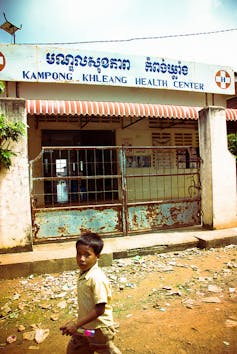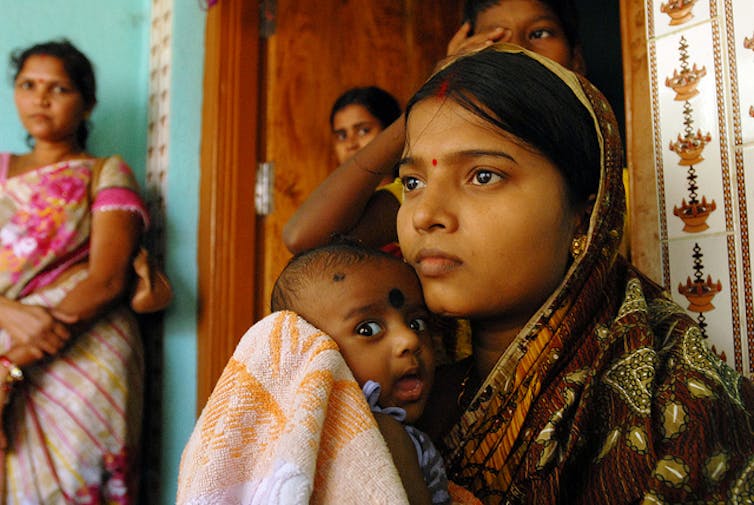Many women and children in poor countries still die, or suffer serious ongoing disability, for reasons that are entirely preventable. What’s more, developing countries face an emerging “epidemic” of non-communicable diseases such as heart disease, cancer and diabetes.
Together with continuing infectious diseases, these illnesses threaten the ongoing development of these struggling nations. But with limited international aid, many developing countries devote only modest resources to addressing these health challenges.
A study published by my colleagues and I recently in the Lancet medical journal addressed the case for greater investment in reproductive, maternal and child health.
We found that increasing health expenditure in these areas in 74 poor countries by just US$5 per person each year could save millions of lives by 2035 and produce massive economic returns.
Economic modelling
In collaboration with experts from the World Health Organisation (WHO) and several international agencies and NGOs, me and my colleagues Bruce Rasmussen and Kim Sweeny (from Victoria University’s Centre for Strategic Economic Studies) examined the economic and social returns on large-scale, long-term programs in the poorest developing countries.
The WHO and collaborating international agencies identified 50 evidence-based interventions to improve these health outcomes covering six areas: maternal and newborn health, child health, immunisation, family planning, HIV/AIDS, and malaria. In each area, the interventions involved:

- increased skilled nursing and medical care
- access to proven methods of care, medicines and other technologies
- more systematic support before, during and after birth.
In assessing the health impact and the cost of these interventions, we estimated the labour supply and productivity implications of lives and illness averted, on a country-by-country basis. We also developed estimates of the social value of the improved health outcomes.
We paid considerable attention to the benefits that accrue to populations when unwanted pregnancies can be reduced and fertility rates contained: increased labour supply, reduced pressure on resources, higher capital intensity, and so on.
The total cost averages about US$30 billion per year, to 2035. This equates to roughly US$5 per person in the 74 countries that carry 95% of the global maternal and child mortality burden. This includes all the poor countries in Australia’s region, from PNG, the Solomon Islands, Indonesia and the Philippines, to China and India, and on to countries such as Pakistan and Afganistan.
A major element of the cost is the strengthening of health systems to be able to deliver such a set of interventions.
Return on investment
For this spend, the direct health benefits are high. Based on current trends, the intervention would prevent the deaths of 147 million children and five million women between 2013 and 2035, avert 32 million stillbirths and reduce ongoing illness for both mothers and children.
The projected return on investment is also high, by any standards. Using a 3% discount rate and extending the benefits only out to 2035 (in fact, they will accrue for many years after that) the benefits-to-costs ratio is about nine and the internal rate of return is about 50%.
In most comparable cases, a benefit-to-cost ratio of two and a real rate of return of 10% would be a good result.
The study shows that the 50 interventions, if well targeted and efficiently implemented, are more than just good investments; they are transformative and will generate returns well beyond the normal investment range because they facilitate broader economic and social development in the community as a whole.
This is especially so of investments in family planning, which can help lift a massive burden of unwanted pregnancies and allow economic and social resources to be better focused on the welfare of the living.

This analysis concerns reproductive, maternal and child health. But in both analytical and policy terms, the next challenge is the biggest one of all: non-communicable diseases.
As the populations of developing countries age, get richer, adopt Western diets and lifestyles and live in deteriorating environments, the incidence of NCDs is rising alarmingly.
There is an urgent need to apply these methods to known interventions for various NCDs, to document the investment case for a large-scale response to this challenge.
Lessons for Australia
Aid programs focused on evidence-based health interventions can have massive benefits in poor countries, and need to be increased rather than cut back. There is a powerful moral case for increased support – and in the world of “bang for the buck”, these interventions rank as highly as anything could.
Australia’s aid program has been a significant investor in health programs and was on track to rise to the OECD average of 0.5% of GDP by 2015-16.
But it’s now at a critical point, with Tony Abbott announcing during the election campaign that a Coalition government would cut the aid budget by A$4.5 billion over four years. This comes alongside the winding of AusAID into DFAT and the likelihood of some review of the focus of the program.
As the Abbott government reshapes our aid program, it should bear in mind both the very high returns to maternal and child health initiatives and the need to build donor coalitions to help countries address the massive challenges of NCD. This is where we can, and should, do a lot to help.

